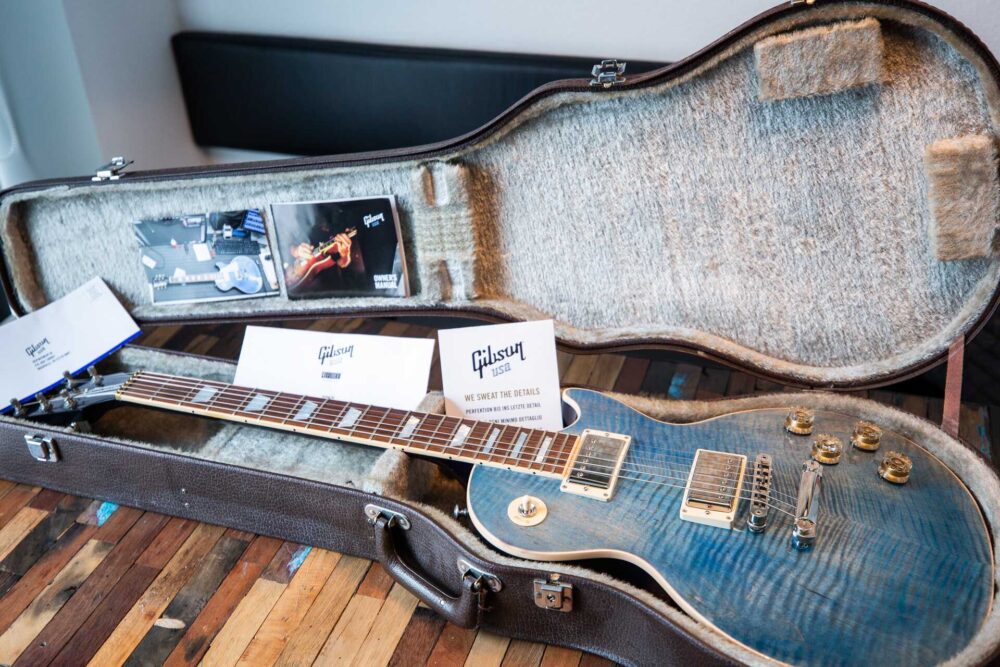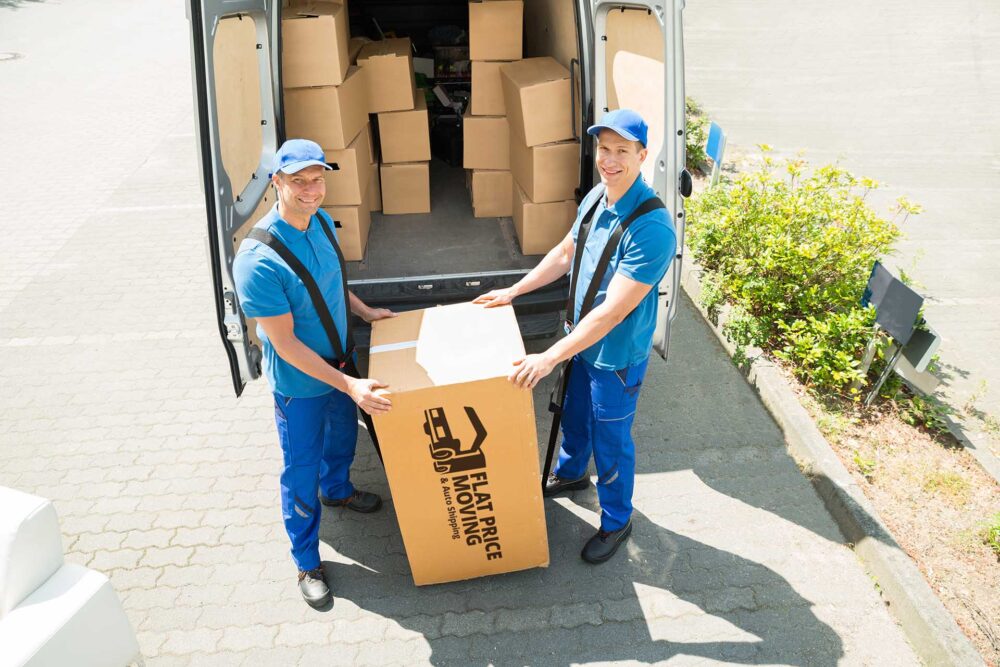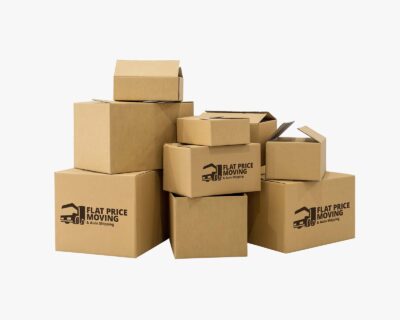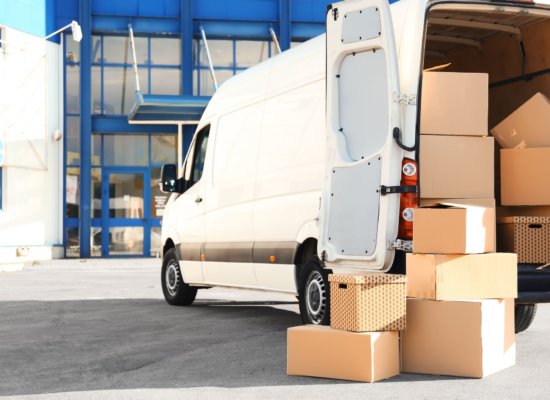How to Pack a Guitar for Shipping: The Ultimate Guide
Navigating the intricacies of safely shipping a musical instrument can be daunting. Thankfully, with our comprehensive guide on how to pack a guitar for shipping, you can confidently secure your prized possession for its journey. From the strings to the body, every detail is addressed to ensure your instrument reaches its destination in perfect condition.

When packing a guitar for shipping, start with gathering essential packing materials. The strings and neck should be secured, any accessories detached, and the instrument must be wrapped securely and then placed inside a hardshell or ABS case. This case should be placed inside a proper cardboard box, any empty spaces should be filled to prevent movement, and the crate should be sealed tightly. If unsure about the process, hire a moving and car shipping company for the job.
Why Proper Guitar Packing is Essential
Guitars, with their intricate craftsmanship and delicate structure, are highly susceptible to damage during transit. Just like a violin’s bow or a painter’s canvas, these instruments need utmost care. Their wooden bodies can easily get scratched, dented, or even cracked if not properly cushioned.
Furthermore, they are sensitive to environmental changes. Rapid temperature shifts can warp the wood and crack the headstock, while fluctuations in humidity can adversely affect the sound quality and structural integrity of the instrument. For an efficient packing process, it is essential to understand the specific packing needs of different types of guitars and save them the hassle of going through stressful transitions.
- How to ship an acoustic guitar – these instruments, with their hollow bodies, are particularly vulnerable. Ensure they are cocooned in layers of bubble wrap, especially around the soundhole and neck,
- How to ship an electric guitar – though solid-bodied, they have sensitive electronics and necks that need safeguarding. Special attention should be given to the pickups and switches,
- How to ship a bass guitar – depending on the number of strings, they can feature longer and wider necks. This unique neck structure needs to be properly braced and cushioned to prevent any potential damage during transit.
If you think about it, guitars are fragile items, so you may want to consider getting professional assistance when planning to ship them. Long-distance movers such as Flat Price Auto Transport and Moving understand the nuances of safe cross-country moving practices, and they will ensure your beloved instruments arrive at their destination in pristine condition.

Step-By-Step Guide: How to Pack a Guitar for Shipping
Each phase in the process is essential for safeguarding the item from potential harm and ensuring it retains its quality and value. By following these steps, you are less likely to overlook key protective measures. This methodical approach brings peace of mind and alleviates relocation stress, knowing that the instrument is poised for a seamless and easy journey.
Gather Necessary Materials
High-quality packing materials can give the best protection against external shocks and pressures. Investing in good quality supplies is an investment in the security and integrity of the shipped goods. Here is the list of different packing materials needed for the safe transportation of your instrument:
- Hardshell case, or gig bag – while a different type of hardshell case offers the best protection, an ABS case is also highly durable and resistant to impacts. A padded gig bag can serve the purpose if you’re packing it within a sturdy outer box,
- Bubble wrap – for cushioning around the item and protecting it from shocks,
- Foam peanuts or crumpled paper – useful for filling voids in the box, preventing the instrument or case from shifting.
- Neck support – foam or folded soft material to provide support to the neck and headstock,
- Durable tape – strong adhesive tape to seal the box securely,
- Sturdy crate – a durable, slightly larger cardboard box that can accommodate the case and additional cushioning materials,
- Plastic or zip bags – for storing detached accessories like straps, tuners, or capos,
- Desiccant packets – these help to absorb any excess moisture inside the box, offering protection against humidity,
- Cardboard or foam inserts – these can provide extra padding or can be used to isolate strings from touching the frets or fretboard,
- Permanent marker – label the box with essential information, such as “Fragile” or “Handle With Care,”
- String ties or rubber bands – useful for securing backup strings to prevent them from snapping or tangling.
Secure the Strings and the Neck and Detach the Accessories
Contrary to common advice, do not loosen the guitar strings if you have a straight headstock – only detune half a step in case your instrument has an angled peg head. Doing so can disturb the instrument’s perfect setup, affect the truss rod that runs through the neck, and potentially cause the bridge to loosen.
These aspects are crucial for maintaining the guitar’s playability and sound quality. Additionally, always remove detachable accessories before relocating. Straps, capos, and tuners should be taken off to prevent potential damage or movement during transit. Safeguard these accessories separately to ensure they aren’t lost or damaged.
Check the video below for tips on how to properly pack your instrument for safe transport.
Wrap the Guitar Securely
Begin by enveloping the entire instrument in bubble wrap, making sure every inch is covered to shield it from potential impacts and unsightly abrasions. It’s advisable to add extra padding around the headstock, bridge, and body, as these areas are particularly vulnerable. This extra cushioning ensures that, even during unforeseen jostles or bumps, the instrument remains unharmed and retains its pristine condition.
Nestle Your Instrument in a Hardshell or ABS Case
Both these cases are engineered to offer robust protection, with their sturdy exterior safeguarding against external impacts and their plush interior cushioning the instrument from the inside. After wrapping your instrument, it’s crucial to position it so that it remains stationary within the case. Ensure all sides are snug and use additional padding if necessary for added neck support and to prevent any movement.

Don’t Forget to Secure the Case After You Are Done Packing
The final step is ensuring the case itself is securely fastened. Locking the case is paramount, serving as the first line of defense against unwanted access or accidental openings.
Additionally, for added security, consider taping any latches or closures. This extra measure ensures they remain in place, even if the case encounters rough handling or unexpected jostling.
Moving Services
Whether you are moving from New York to Los Angeles or from San Francisco to Chicago, we can help you.
Read morePacking Services
Our moving teams are trained to pack your belongings in the most efficient manner possible.
Read moreStorage Service
Knowing what kind of surprises cross country move may hold, we offer 30 day free storage for belongings at the origin state.
Read moreFill Empty Spaces and Seal the Box
Ensuring that the case remains stationary inside its outer container is crucial. Utilize supplies such as bubble wrap or packing paper to fill any gaps surrounding the case.
This prevents unnecessary movement and provides additional cushioning against potential impacts. Once you’re satisfied with the positioning, the next step is to seal the container securely. Use strong duct tape, making sure to cover all openings and reinforce the edges.

Additional Tips on How to Package a Guitar for Shipping
When preparing your instrument for relocation, it’s always a wise decision to insure it for its full value. Having good insurance coverage offers an added layer of protection and ensures that in the rare event of damage or loss, you’re adequately compensated.
Furthermore, consider including a note inside the box with your contact information. This proactive step will ensure a stress-free relocation, as it can be invaluable if any issues arise during transit, allowing for swift communication and resolution.

Hire Our Long-Distance Moving Company and Entrust Us With Shipping Your Instrument
At Flat Price Auto Transport and Moving, we understand the value and sentiment attached to your instruments. As seasoned cross-country movers, our packing services are meticulously designed to guard against even the smallest risk during transit. Our long-distance moving services are designed to ensure the utmost care for every item we handle, providing you with a streamlined moving experience. For more packing tips and unparalleled care and professionalism, contact us today and experience the difference of entrusting your prized possessions to experts.
FAQ
Can I Ship a Guitar in a Soft Case Instead of a Hardshell Case?
While a soft case does offer a layer of protection against minor scuffs or dust, it doesn’t provide the same robust defense against potential impacts or external pressures as a hardshell case. If you opt for a soft case, it’s crucial to place it inside a perfectly sized sturdy external box with ample cushioning materials such as crumpled packing paper, foam peanuts, or leftover bubble wrap for optimal protection during its journey.
How Do I Protect the Guitar's Finish From Humidity-Related Damage?
Variations in humidity can be detrimental to an instrument’s finish. Including desiccant packets inside the case can be a proactive measure, helping to absorb any excess moisture and keeping the atmosphere inside stable, protecting the instrument’s integrity during relocation to its new home.
Can I Pack Accessories in the Same Box as the Guitar?
Including accessories in the same box is possible, but they should be properly secured, put in the compartment under the instrument’s neck, or wrapped separately to ensure they don’t shift during transit, possibly harming the instrument. If space allows, create designated pockets or sections between cushioning for these items to be nestled in.
Should I Remove the Neck Before Packing the Instrument for Transportation?
In most cases, the neck shouldn’t be removed unless the instrument was specifically designed with this feature in mind. If you’re uncertain, it’s wise to consult with the instrument’s manufacturer or a specialist for guidance.
What's the Best Way to Label the Shipping Box for a Fragile Guitar?
Marking the box with “Fragile” in bold, easily visible letters on multiple sides can alert handlers to treat the box with care. Additionally, any labels indicating directions or specific handling instructions can be beneficial for the relocation process.
Can I Use Foam Padding Inside the Guitar Case for Extra Protection?
Foam padding can be a great asset, especially custom-cut foam that fits the instrument’s contours. This can provide additional cushioning and immobilize the instrument, especially around critical and vulnerable areas.
How Do I Choose the Right Auto Transport Company for My Valuable Guitar?
Research and due diligence are paramount. Seek and hire a moving company with proven expertise in handling delicate items. Prioritize those with transparent insurance options, customer testimonials, and perhaps even certifications in fragile item handling, as that proves the company’s legitimacy.
What Precautions Should I Take if My Guitar Has Electronic Components?
Relocating electronics brings added complexity. Ensure batteries are removed to prevent corrosion or unwanted electrical activity. Additionally, electronic components, like pickups or tuners, should be secured and cushioned against shocks. Anti-static bubble wrap sheets can also be beneficial.
How Far in Advance Should I Prepare the Guitar for Shipping?
Give yourself ample time, ideally a week or more if possible, to set up a good relocation plan and have a thorough preparation process. This buffer ensures you can acquire any specific supplies, address any issues, and not feel rushed, which could lead to oversights.
Is It Better to Use the Original Packaging When Sending My Instrument?
Original packaging is typically designed for the instrument’s specific shape and size, providing an optimal fit. If you have retained the original packaging, it can be an excellent choice for added protection during transit.
How Often Should I Check the Tracking Information During Transit?
Regularly monitoring the tracking details can offer peace of mind. It’s advisable to check every day or two to stay informed about the current location and progress of your parcel.
What Do I Do if My Instrument Arrives With Visible Damage to the Package?
Upon receipt, if you notice any visible damage or tampering with the package, document it with photos before opening it. Contact the transport company immediately to report the issue and inquire about the next steps.
How Should I Store My Instrument Once It Reaches Its Destination?
Upon arrival, it’s essential to acclimatize the instrument gradually. Store it in its case in a stable environment, away from direct sunlight or extreme temperature changes, for at least 24 hours before use.
Is It Advisable to Send Multiple Instruments in One Package?
Combining instruments can be a practical solution, especially when utilizing purpose-built ABS and touring cases designed for transporting multiple items safely. However, for an added layer of security, it’s recommended to wrap each instrument separately, ensuring they are well-cushioned from one another within the case.









